Introduction and photos by Geoff, Italian Captions by Serena
In my last post My Name is Magra I wrote:
But when we rage
and thunder after the rains
they curse us
Ma quando infuriamo
e tuoniamo dopo le piogge
ci maledicono
… and not without good cause. We live close to the source of the Magra, which passes our house in the valley below. This year, after two days of Monsoon like downpours, we saw the river infuriato as never before. The old people of the village all agreed, non l’abbiamo mai visto così!
Dressed like a scuba diver in waterproofs and wellington boots, and armed with my camera, I braved the tempest. Here are a few photos of the Magra at its most dramatic, alongside those which I took when the waters had receded to their normal level.
|
1a. Il torrente Magra in piena sotto il ponte medievale, con le grandi rocce completamente coperte dalle acque fangose. Dalla finestra di casa nostra vedevamo gli alberi cadere come se fossero stati stuzzicadenti.
|
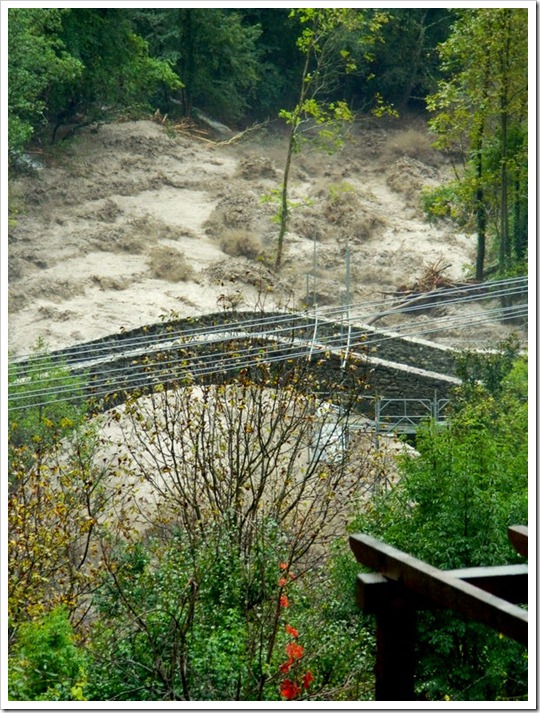 |
|
1b. Il torrente Magra dieci giorni dopo: un tranquillo rigagnolo che scorre pacificamente fra grandi rocce pulite e scheletri di alberi.
|
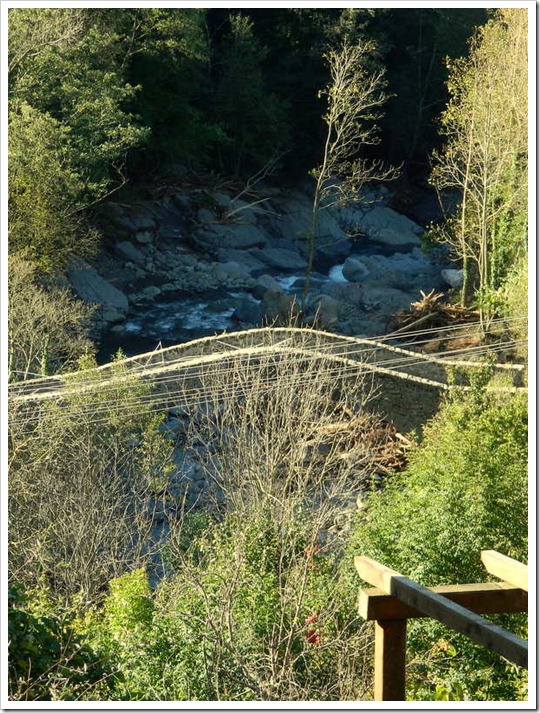 |
|
2a. Il torrente Magra sotto al ponte della strada provinciale. Le sue acque agitate erano a circa due metri dal livello stradale, faceva paura attraversare il ponte.
|
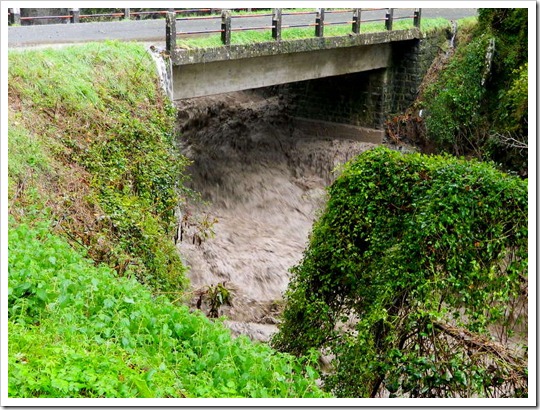 |
|
2b. Oggi il torrente Magra lo si intravvede a malapena giù in fondo ai piedi della parete rocciosa, ripulita dal fango e dalle piante.
|
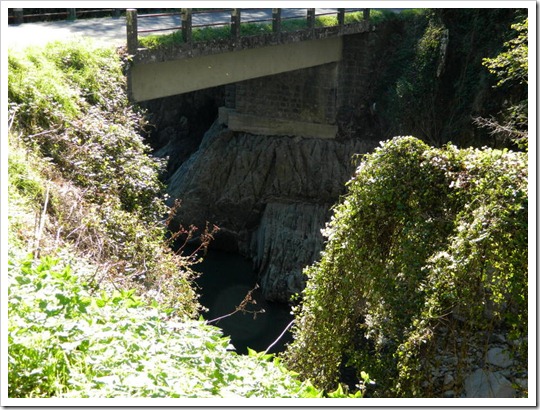 |
|
3a. Il Magra non è più un torrente, ma un vero e proprio fiume che trascina a valle tutto ciò che trova al suo passaggio.
|
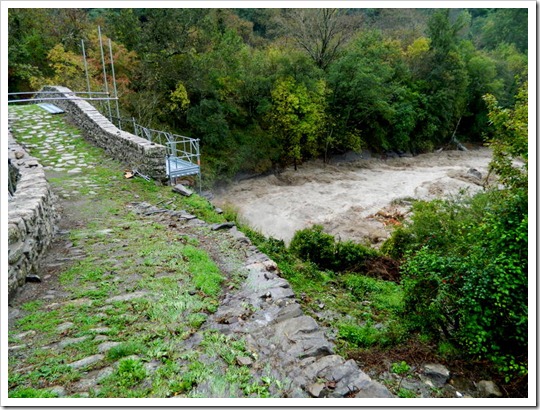 |
|
3b. Le sponde del Magra sono riapparse, pulite come non le avevamo mai viste prima.
|
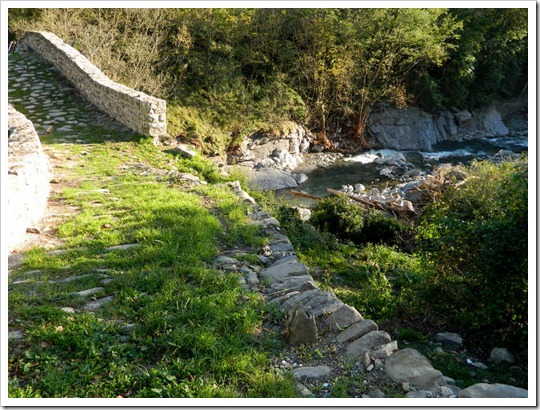 |
|
4a. Le acque schiumanti del torrente hanno invaso spazi che normalmente non sono mai toccati dal Magra. L’ampiezza del fiume è almeno triplicata.
|
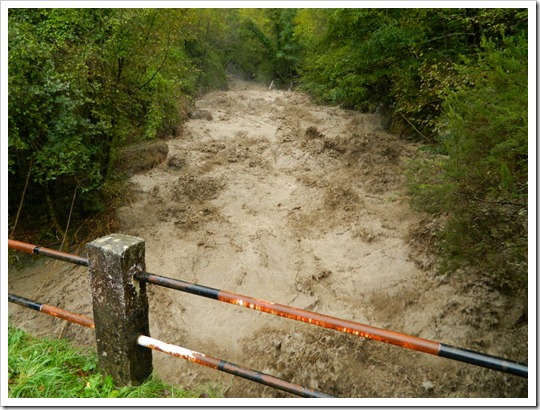 |
|
4b. Il letto del fiume ha completamente cambiato la sua fisionomia: non solo è molto più ampio, ma sono scomparsi tanti sassi e tanti stagni che conoscevamo bene, e ne sono apparsi di nuovi.
|
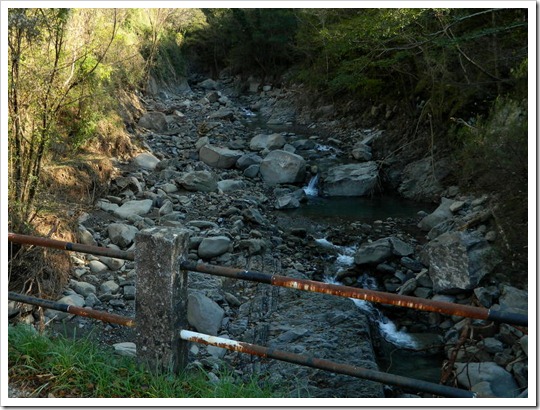 |
|
5a. L’arco del ponte medievale spunta dalle acque ribollenti che colpiscono con furia le sue fondamenta e trascinano via il ponteggio allestito per il restauro. Si sente un tuonare continuo: sono i massi che rotolano e sbattono di qua e di là spinti dalla violenza della corrente.
|
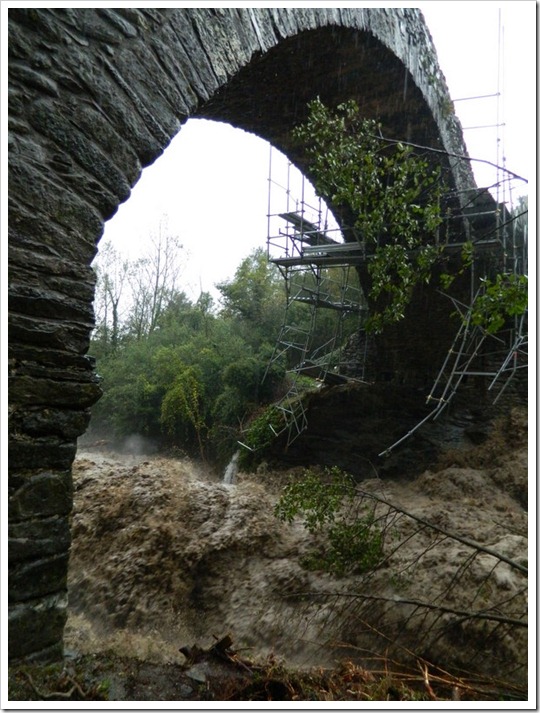 |
|
5b. Dov’è finita tutta quella fiumana inarrestabile? Il ponte si erge alto e maestoso sopra ad un tranquillo torrentello
|
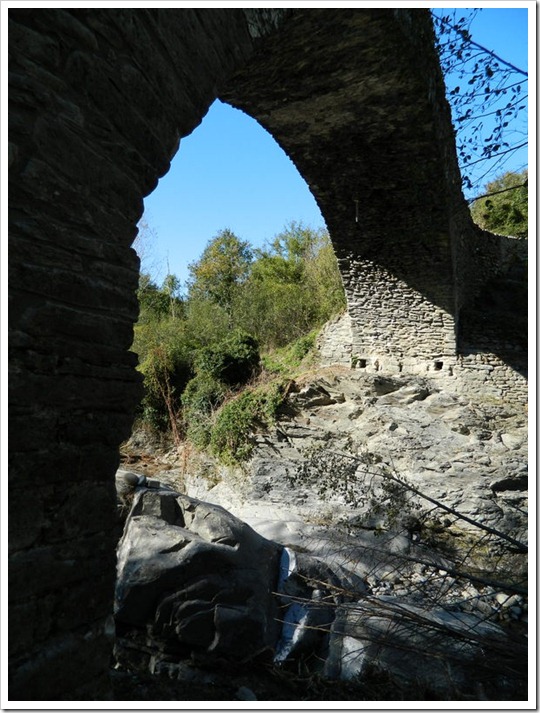 |
Hands up who wants to translate the captions!


Comments:
Miles Back:
OK I’ll put my hand up and have a go…eeek!
The earlier pictures and “didascalie” were easier for me, but I did need to ask help from Signor Google for the last few.
1a The Magra stream in full (flood) under the medieval bridge, with big rocks completely covered by the muddy water. From the window of our house we saw trees fall like they were (just) toothpicks.
1b The Magra stream 10 days later: a quiet brook flowing peacefully between large clean rocks and skeletons of trees.
2a The Magra underneath the provincial road bridge. It’s agitated waters were around two meters below the level of the road, it was scary to cross the bridge.
2b Today you can barely see the stream at the bottom of the cliff. (It is now) clear of mud and plants.
3a The Magra is no longer a stream, but is truly a real river that sweeps downstream all it finds in its path.
3b The banks of the Magra reappeared, cleaner than we had seen before.
4a The stream’s foamy waters have invaded areas that are normally never touched by Magra. The width of the river has at least tripled.
4b The riverbed has completely changed its character: not only is it much wider but we have lost many rocks and ponds that we knew well and new ones have appeared
5a The arch of the medieval bridge spans over the bubbling water (that is) furiously hitting its foundations and dragging away the scaffolding set up for (its) restoration. You hear continuous thunder as the boulders driven by the violence of the current roll and slam here and there.
5b Where is that irresistible flood? The bridge stands tall and majestic about the tranquil stream.
Geoff:
@Miles Back Complimenti Miles, veramente una bella traduzione! Ecco qualche suggerimento:
1a: “vedevamo gli alberi cadere come se fossero stati stuzzicadenti” = we saw the trees fall as if they were toothpicks (to me this gives more emphasis on the subjunctive, which is hardly used in English)
1a and 1b: torrente is probably best translated as torrent because it describes a rocky mountain river. Stream is more descriptive of a small tranquil river running through meadows, for which we would use the word ruscello.
2b. “giù in fondo ai piedi della parete rocciosa”= down below at the foot of the wall of rock. For cliffs we tend to use scogliere (sea cliffs), and rupi (inland cliffs)
3b. “Le sponde del Magra sono riapparse, pulite come non le avevamo mai viste prima”= The banks of the Magra have reappeared, cleaner than we’ve ever seen them.
4b. “ma sono scomparsi tanti sassi e tanti stagni che conoscevamo bene, e ne sono apparsi di nuovi” = but many of the rocks and ponds that we knew well have disappeared and new ones have appeared.
5a. “Si sente un tuonare continuo” = You can hear a continuous/constant thundering: ….
5b. “Dov’è finita”= what’s become of…..?, as opposed to simply dov’è?, where is?
Comunque, come ho detto prima, hai fatto un bel lavoro, a presto, Geoff 🙂